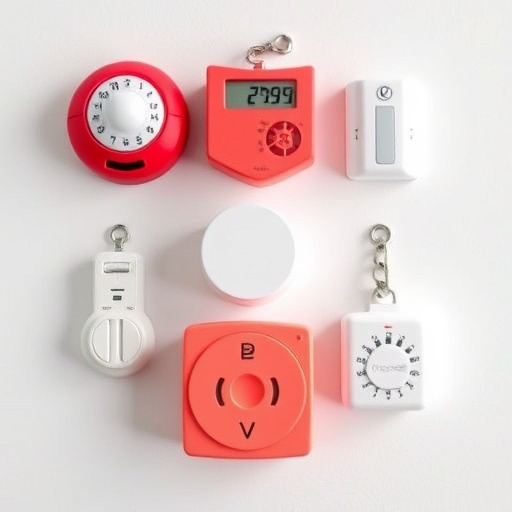In today's digital age, wrist-mounted personal safety alarms are empowering senior citizens by offering a discreet yet potent solution for their well-being and independence. These compact devices provide instant access to help, detect falls, and offer remote monitoring, ensuring peace of mind for seniors and their loved ones. Proactive implementation, including clear instructions, pre-set alerts, regular testing, and integration with home security systems, maximizes their benefits, effectively combining technology with care for prompt senior assistance.
As our aging population grows, ensuring the safety and well-being of seniors becomes increasingly vital. Wearable security alarms specifically designed for seniors offer a peaceful mind by providing rapid response in case of emergencies. This article explores the growing need for wrist-mounted personal safety alarms, highlighting their features and benefits tailored to seniors’ needs. We’ll also guide senior caregivers on implementation best practices, empowering them to protect their loved ones effectively. Discover how these innovative devices can enhance safety and independence for our elders.
- Understanding the Need for Wearable Security Alarms for Seniors
- Features and Benefits of Wrist Mounted Personal Safety Alarms
- Implementation and Best Practices for Senior Caregivers
Understanding the Need for Wearable Security Alarms for Seniors
In today’s world, where seniors are increasingly embracing technology for enhanced independence, wearable security alarms emerge as a vital tool for personal safety. As our aging population navigates their daily routines, solitude can often be a concern, leaving them vulnerable to unforeseen situations. Wrist-mounted personal safety alarms address this pressing need by offering a discrete yet powerful solution. These compact devices, designed with the senior’s comfort and accessibility in mind, allow users to instantly signal for help in emergencies, providing peace of mind both for the individual and their loved ones.
By incorporating wearable security alarms into their daily lives, seniors gain a sense of empowerment and autonomy while ensuring prompt assistance when needed. With just a simple press of a button, these wrist-mounted devices can connect users to emergency services or alert caregivers, fostering a safer and more secure environment. This innovative approach to personal safety is particularly beneficial for those living alone, enabling them to maintain their independence while mitigating potential risks.
Features and Benefits of Wrist Mounted Personal Safety Alarms
Wrist Mounted Personal Safety Alarms offer a discreet yet powerful solution for senior citizens’ safety. Their compact design allows them to be worn comfortably as a wristband, making it easy for seniors to carry them wherever they go. These alarms are equipped with various features such as push-button activation, automatic fall detection, and remote monitoring capabilities. With just a simple press of a button, the alarm can notify emergency services or caregivers, providing immediate assistance in case of an accident or distress situation.
The benefits of Wrist Mounted Personal Safety Alarms are numerous. They provide seniors with enhanced peace of mind, knowing that help is readily available at their fingertips. This technology also encourages independence, allowing seniors to live more actively without constant supervision. Moreover, these alarms often come with long-lasting batteries and water-resistant designs, ensuring they can withstand daily use and even accidental exposure to water.
Implementation and Best Practices for Senior Caregivers
Implementing wrist-mounted personal safety alarms for seniors is a thoughtful step toward ensuring their well-being and independence. Senior caregivers can benefit from these devices by incorporating them into daily routines, encouraging their use as a matter of habit rather than just an emergency measure. Best practices include demonstrating the alarm’s functionality to the senior regularly, ensuring easy access and comfort during wear, and providing clear instructions on activation for both the wearer and other household members.
Caregivers should also establish pre-set alert protocols, such as contacting specific family members or emergency services under different scenarios (e.g., falling, feeling unwell). Regular testing of alarms and battery checks are essential to maintain reliability. Moreover, integrating these devices with existing home security systems can offer added protection, enhancing the overall safety net for seniors in their homes.
Wearable security alarms, particularly wrist-mounted personal safety alarms, offer a practical solution to ensure the well-being of seniors. By incorporating these devices into care plans, caregivers can provide an extra layer of protection, enabling prompt assistance during emergencies. With their discrete yet powerful features, wrist-mounted alarms empower seniors to maintain independence while giving caregivers peace of mind. Implementation involves simple best practices, making it a feasible and effective step towards enhancing senior safety in today’s world.
